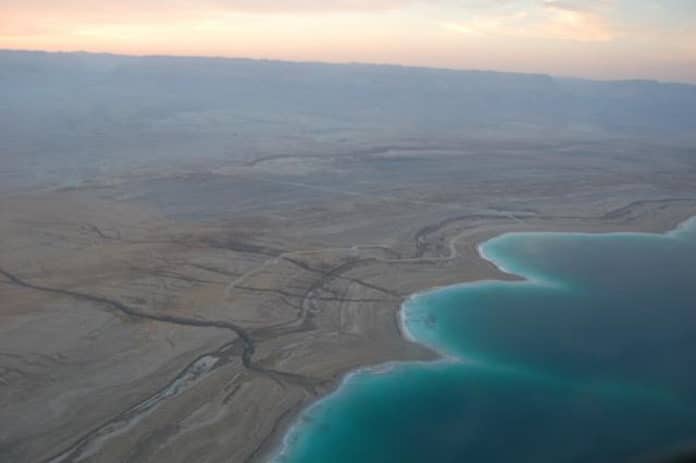The special features of the Dead Sea don’t end there: the lake’s waters are a light turquoise-blue color and it is surrounded by golden brown hills; here and there, bright white salt crystals jut out of the water.
Its mineral-rich water and mud are believed to have numerous benefits for the body, especially for skin, respiratory and arthritic conditions.
Also, The Dead Sea is famously known for being one of the saltiest bodies of water in the world, and certainly the deepest hypersaline in the world. In its harsh environment, only salt-loving microbes from the Archaea domain, known as extreme halophiles, are able to survive.
In order to reconstruct its biological and geological history, geologists are interested in the evolution of this lake and have been investigating its subsurface. The salty sediments of the Dead Sea are still full of mysteries, in particular regarding the life forms harbored there, commonly called the deep subsurface biosphere.
Now, a new study suggests that the survival of microbial life beneath the Dead Sea may have once even depended on eating the dead. The findings are expected to open a window into Earth‘s mysterious deep biosphere — the subterranean world between Earth’s surface and its core — where potentially millions of undiscovered microbial species thrive in improbably extreme conditions.
There is vast microbial biomass below the Earth’s surface, which survives without oxygen, light, or fresh food delivery. This subsurface biosphere has been the subject of numerous scientific studies. Its importance in global biogeochemical cycles is largely acknowledged, and constant efforts are being carried out to estimate the limits of life development in these extreme environments, as they present immense potential for medical and biotechnology research.
Given its exceptional salinity, the Dead Sea subsurface is an environment where life is pushed to its limits and, as such, constitutes a prime choice to investigate how life forms can adapt and thrive.
During the study, scientists observed molecular fossils preserved in deep sediments and detected that unique molecular compounds, known as storage lipids, in the most saline sedimentary layers of the lake. The chemical structure of these lipid compounds indicates that remains from extreme halophilic archaea were recycled by other microbial populations, likely from the bacteria domain, previously thought to be unadapted to such a harsh locale.
This necrophagic behavior allowed them to build carbon stocks in this food-deprived environment. It also provided water to mitigate the extreme salinity of the Dead Sea subsurface.
This all constitutes an unprecedented strategy for survival in the deep biosphere. These findings widen the understanding of adaptations exhibited by microorganisms to live in extreme environments, a research domain scientists are only beginning to understand.
